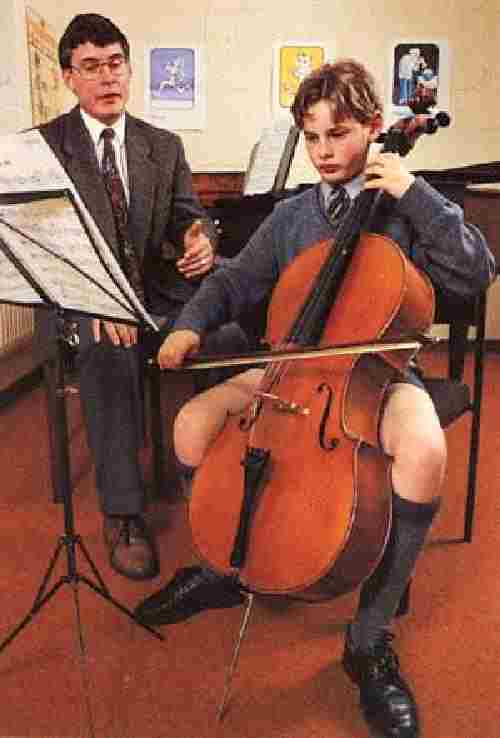
Figure 1.--This English boy at a private preparatory school studies the cello. He is about 12 or 13 and can easily handle the instrument.


Figure 1.--This English boy at a private preparatory school studies the cello. He is about 12 or 13 and can easily handle the instrument. |
The cello, large, low-pitched musical instrument of the violin family, held between the performer's knees. The size of the cello makes it difficult for a young child tp handle, but by about 10 or 11 years of age it is possible for many children to begin playing the instrument. The cello has four strings tuned C G d a (C = two C's below middle C; a = the A below middle C). Its range extends over more than four octaves. The earliest surviving cellos are two from the 1560s by the Italian violinmaker Andrea Amati. Until the late 18th century the cello was primarily a supporting instrument, playing bass lines and adding fullness to musical textures. During the baroque era unaccompanied cello suites were composed (1720?) by the German composer Johann Sebastian Bach, as were cello concertos by Antonio Vivaldi and Luigi Boccherini, the Italian composers. In the 19th century, works for the cello included concertos by Johannes Brahms and the Czech composer Antonín Dvorák. In the 20th century, composers such as the Russians Sergey Prokofiev and Dmitry Shostakovich further explored its solo capabilities. The most prominent 20th-century cellist was the Spanish-born Pablo Casals. Other leading soloists are the Russian-born Gregor Piatigorsky and Mstislav Rostropovich.
The cello is related to the violin family of insytuments. In fact the modern term "cello" evolved from the formal name for the instrument, violin cello. The cello, large, low-pitched musical instrument of the violin family, held between the performer's knees. The cello has four gut strings tuned C G d a (C = two C's below middle C; a = the A below middle C). Its range extends over more than four octaves.
The size of the cello makes it difficult for a young child tp handle, but by about 10 or 11 years of age it is possible for many children to begin playing the instrument.
The instrument in its present form dates from the later half of the 16th century. The earliest surviving cellos are two from the 1560s by the Italian violinmaker Andrea Amati. The quality of early cellos is little known. Since the time of Hyden it has steadily gained in favor. It superceded the once popular viola de gamba.
Until the late 18th century the cello was primarily a supporting instrument, playing bass lines and adding fullness to musical textures. During the baroque era unaccompanied cello suites were composed (1720?) by the German composer Johann Sebastian Bach, as were cello concertos by Antonio Vivaldi and Luigi Boccherini, the Italian composers. In the 19th century, works for the cello included concertos by Johannes Brahms and the Czech composer Antonín Dvorák. In the 20th century, composers such as the Russians Sergey Prokofiev and Dmitry Shostakovich further explored its solo capabilities.
The most prominent 20th-century cellist was the Spanish-born Pablo Casals. Other leading soloists are the Russian-born Gregor Piatigorsky and Mstislav Rostropovich.
Related Chronolgy Pages in the Boys' Historical Web Site
[Main Chronology Page]
[The 1880s]
[The 1930s]
[The 1940s]
[The 1950s]
[The 1960s]
[The 1970s]
[The 1980s]
Navigate the Historic Boys' Clothing Web style pages:
[Kilts]
[Caps]
[Sailor suits]
[Sailor hats]
[School uniform]
[Scout]
